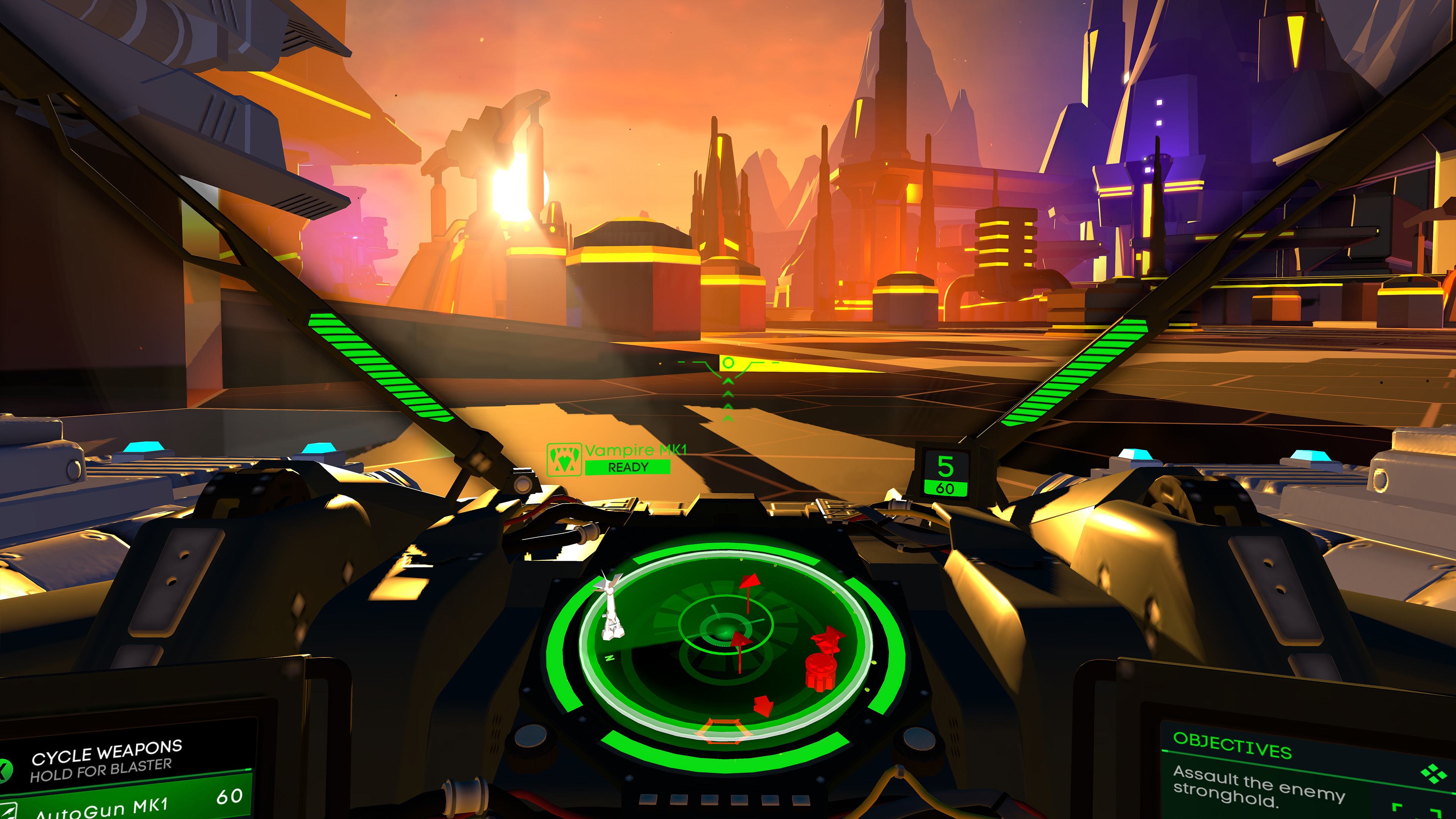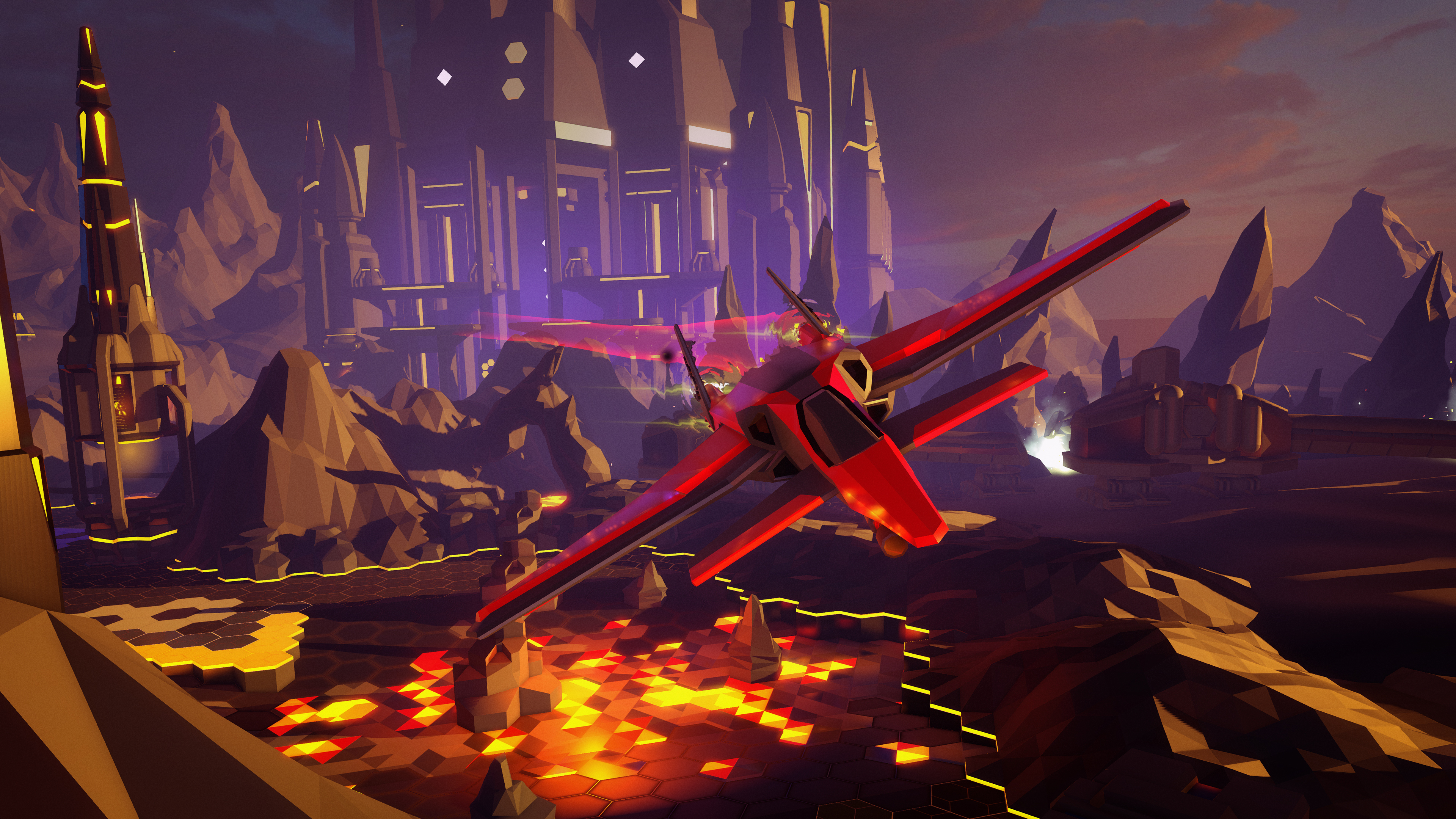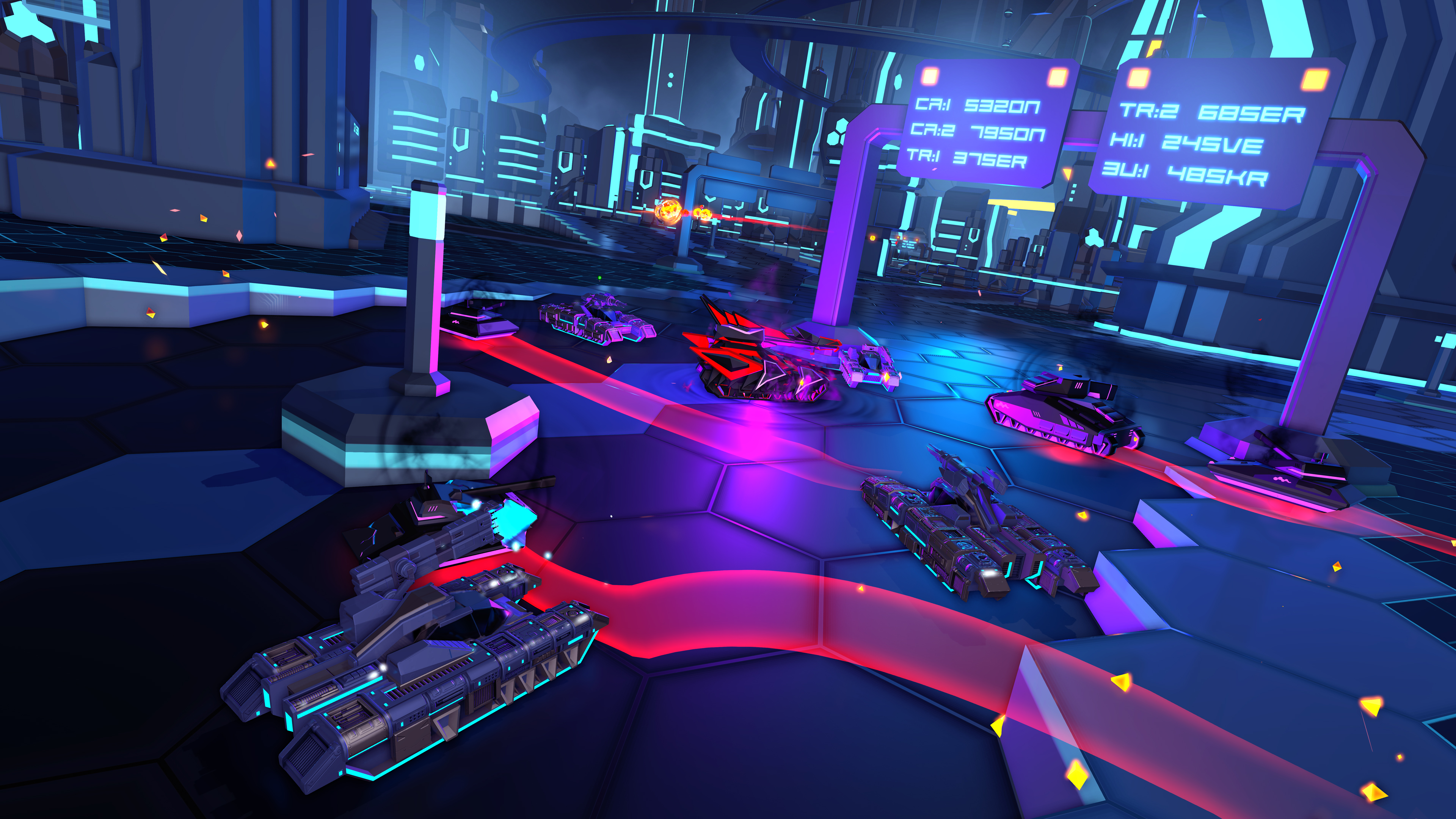The original Battlezone was one of the most innovative games ever created. Its state-of-the-art vector graphics and first-person perspective were unique for the time. Its ‘periscope’ view-finder also offered gamers a high degree of immersion that few games could match. It’s these aspects that made Battlezone such a classic, and now, gamers can experience the fun in a whole new way with the reimagined VR edition of Battlezone. This virtual reality powered remake brings the classic arcade action to the Oculus Rift and HTC Vive, and considering the original Battlezone’s innovative design, it feels like a natural homecoming.
Old School is the Best School
It’s easy to draw a line from the original Battlezone arcade cabinet to the virtual reality headsets of today. Here’s how Battlezone’s lead programmer Rich May explains it: “The iconic green vector lines of Battlezone defined the 3D game genre for years, before shaded polys and texture mapping. It’s also easy to look at the periscope viewer as one of the early precursors for current VR headsets. Given this innovative heritage, the franchise seemed like a natural fit for the Oculus Rift and the HTC Vive.”
The obvious connections to virtual reality wasn’t the only thing that spurred the team at Rebellion to create Battlezone, however. “Nostalgia played a big part,” May says. “Several members of the team, including our co-founders Jason and Chris [Kingsley], grew up during the heyday of arcade gaming, so games like Battlezone were a big part of our upbringing.”
Going Back to the Future
That personal connection to the original definitely shows through in Battlezone. The game is a loving homage to the original that features the trademark combination of intense vehicle-based action and a visually stunning world. Zooming around the battlefield in your tank while blasting away at the endless waves of enemies feels familiar and comfortable. And yet, Rebellion didn’t just add a new coat of paint to the established design. Rather, they made every effort to bring the game into the modern age.
“Battlezone needed a retro vibe but everything had to evolve,” May says. “It took a while to nail down but we used a combination of techniques like dynamic lighting and shadows, high-resolution screen-space reflections, and a slew of post-processing techniques to get things right. The end result is something that looks retro, but isn’t just a copy of what’s come before.”
The move to virtual reality also allowed Rebellion to take full advantage of the powerful hardware that supports the Oculus Rift and HTC Vive. Fast CPUs and high-end GPUs like the NVIDIA GeForce GTX 1080 Ti allowed them to create a world for players to experience that is lightyears beyond what was possible just a few decades ago.
“The high resolution of the Vive and Rift headsets really allow us to really focus on providing fine details without worrying about visual clarity,” May says. “The PC platform also gives us the horsepower to really push the envelope out in terms of resolutions, anti-aliasing, and so forth, so Battlezone has never looked better.”
In the Driver’s Seat
Virtual reality’s ability to fully immerse players in the game world was another feature Rebellion was eager to take advantage of. “It’s the sense of being ‘there’ that really makes the difference,” May notes. “I still occasionally stop to take a moment to look around the world we’ve created. That sense of wonder and awe is something you just can’t replicate in a traditional game.”
However, working in an emerging medium like VR wasn’t without its challenges. Some were well known to the team, so they were addressed from the onset. “Common issues like mitigating motion sickness and maintaining a smooth framerate definitely cropped up,” May notes. “But there were a whole slew of other issues we weren’t expecting.”
One notable problem had to do with the fact that VR gamers can look around at will. Surprisingly, Rebellion found that some players weren’t exercising that freedom enough. “When we first started playing and testing Battlezone, we noticed that many experienced gamers would develop a kind of ‘tunnel vision,’” May says. “They would only stare forward and play it as they would a normal game.”
This led the team to include more incentive to look around. “We added things like the hoppers, the swarm and the UFOs that you have to crane your neck upward to track,” May says. “We also display vital information on physical panels that are inside the cockpit. These are outside of your straight-forward field of view, so you have to look down to do things like check your radar, which adds a certain element of risk to the game. Do you stay locked onto your current target or risk a glance around to check your flanks? It all adds up to make the game feel much more dynamic.”
In the Zone
Thanks to Rebellion’s game design expertise and familiarity with the original, Battlezone stands as both a great callback to a bygone era and an exciting glimpse into the future. While the gameplay and overall feel of the game are clearly inspired by the arcade classic, the updated visuals, VR specific design concepts, and innovative features like a multiplayer co-op mode that takes advantage of the mics built into the Oculus Rift and HTC Vive, ensure the game feels fresh.
It’s sure to make gamers of all ages feel the same sense of wonder that gamers back in the 80s did when they first peered into Battlezone’s periscope viewer. The experience of creating Battlezone has also left the Rebellion team energized and ready to tackle new projects. “Developing for VR has been a brilliant experience and we’d love to do more,” May says. “We’ve only just tapped the surface of what we can do with the Battlezone world and VR in general.”
Considering how good Battlezone turned out, we can only hope Rebellion will lead us out into virtual battle again in the near future.
Battlezone will be launching on both Oculus Rift and HTC Vive. In order to get the best possible VR experience, make your gaming rig is VR Ready with a GeForce GTX 10-series GPU, like the newly released GeForce GTX 1080 Ti.



